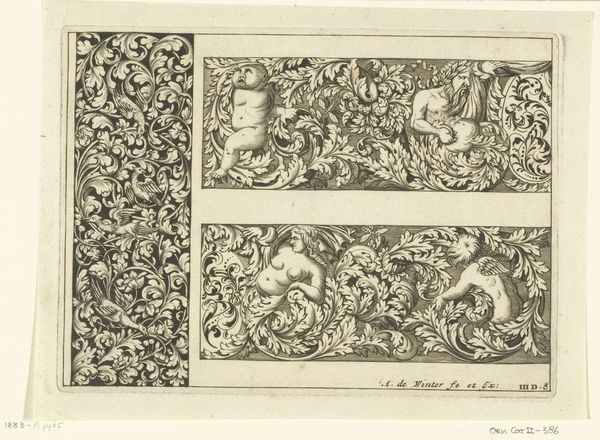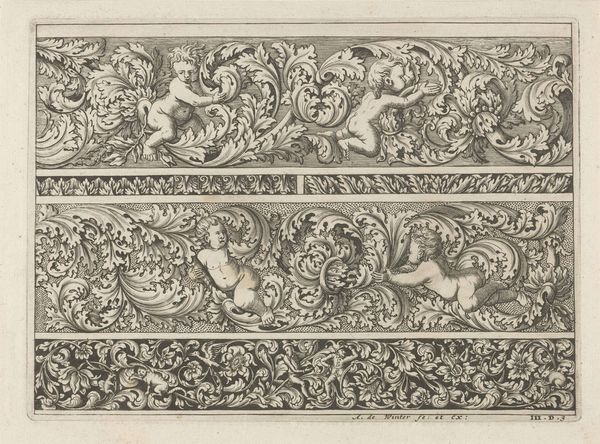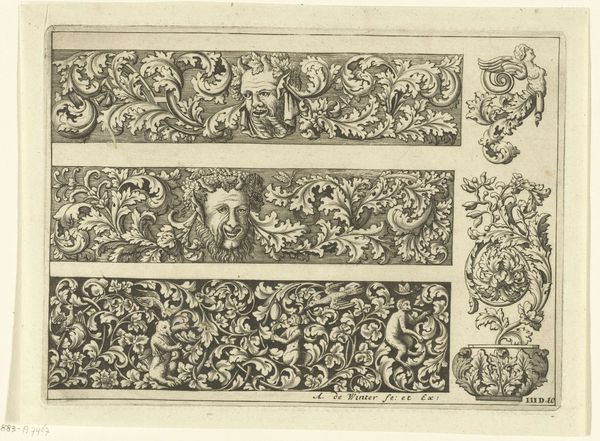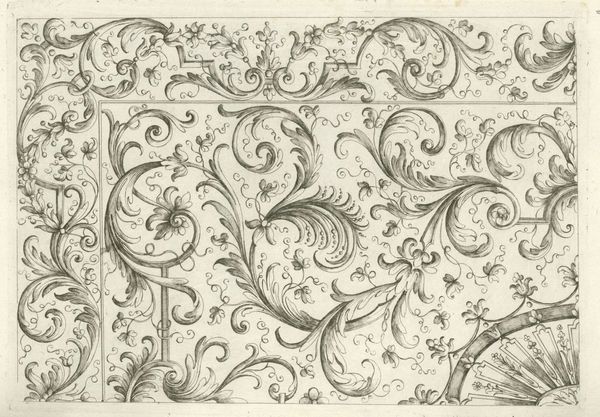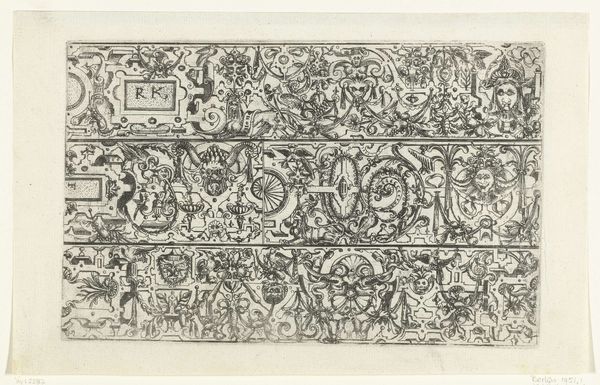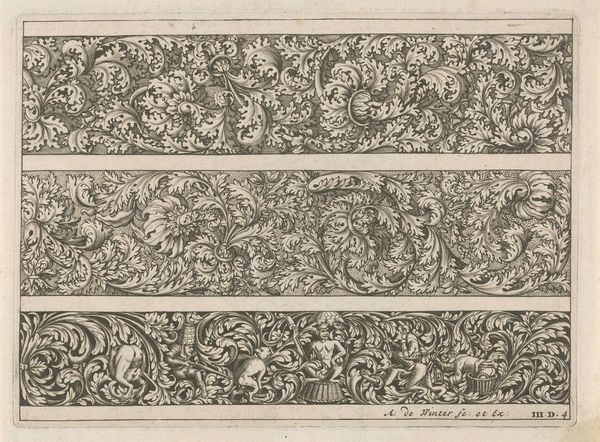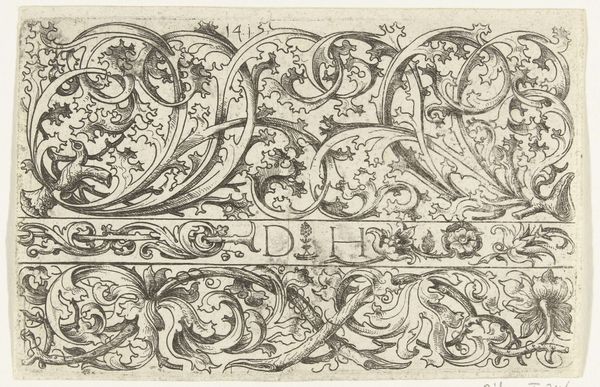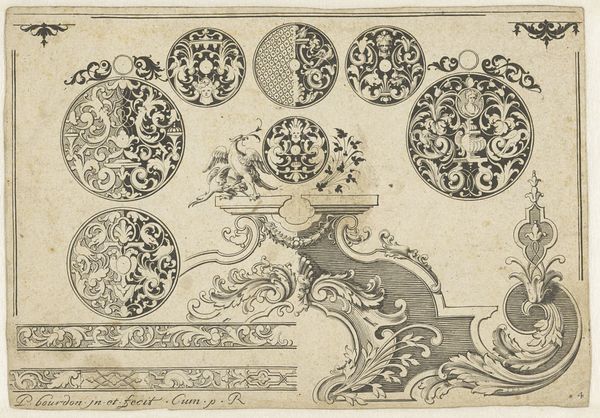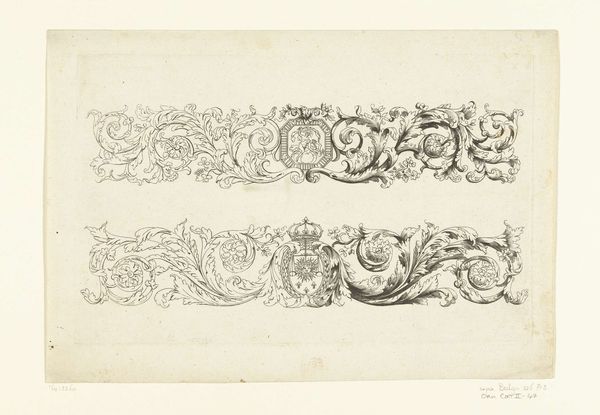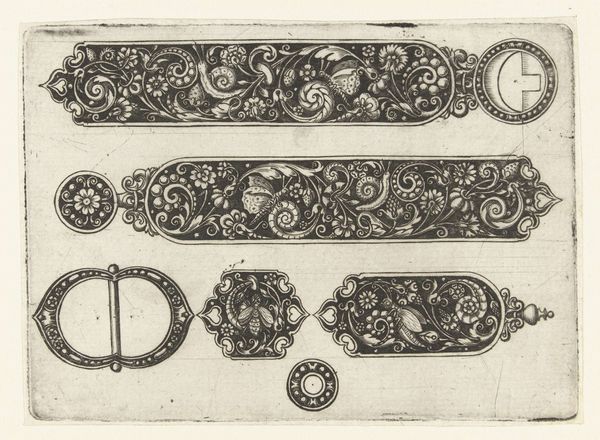
drawing, pen, engraving
#
drawing
#
allegory
#
baroque
#
pen drawing
#
figuration
#
geometric
#
line
#
pen
#
decorative-art
#
engraving
Dimensions: height 138 mm, width 188 mm
Copyright: Rijks Museum: Open Domain
Curator: This is "Three Strips with Leaf Tendrils, Masks, and Putti," a pen drawing by Anthonie de Winter from 1696, currently held in the Rijksmuseum collection. Editor: My immediate reaction is one of intricate abundance. The detail is dizzying, a visual feast almost overwhelming in its baroque complexity. The crispness of the lines, achieved through what I now know is pen and ink, lends a peculiar sharpness. Curator: Absolutely, that's characteristic of Baroque decorative art. Note how De Winter combines naturalistic elements—the acanthus leaves—with those mythological putti and grotesque masks. It is the use of classical forms employed to project dynastic power, rendered with naturalism, sensuality, and the decorative impulse that marks the era. Editor: I'm drawn to the repetition, the mirroring in each of the bands. There's a rhythm established by the placement of figures and masks within the scrolling foliage. The whole design feels structured yet simultaneously organic. Semiotically, those recurring putti act almost like signifiers of innocence, placed against the weightier implications of the masks. Curator: Precisely! Putti often signify divine love and connection with the sacred. The masks can have many meanings, perhaps suggesting transformation, disguise, or even darker, hidden aspects of human nature, all couched in lush foliage suggesting ever-lasting abundance and renewal. Editor: And the choice of line? So economical, each stroke perfectly delineating form and texture. How does the technique contribute to the overall impact? It feels very considered, calculated even. Curator: The line, I think, contributes to the work's clarity despite its complexity, referencing classical drawing practices and even echoing the linearity of engraved ornament prints very much in vogue then. The artist uses the medium not to evoke realism, but to convey an ideal through symbols and carefully constructed forms, to remind viewers of established themes, such as love, death and transformation. Editor: Seeing the artwork discussed has illuminated aspects of it I wouldn't have noticed initially, confirming its carefully planned composition and its capacity to transmit cultural symbolism. Curator: And, from my perspective, analyzing the visual elements has confirmed De Winter's understanding of established visual tropes, reminding us that images never function in isolation but carry cultural memory.
Comments
No comments
Be the first to comment and join the conversation on the ultimate creative platform.

